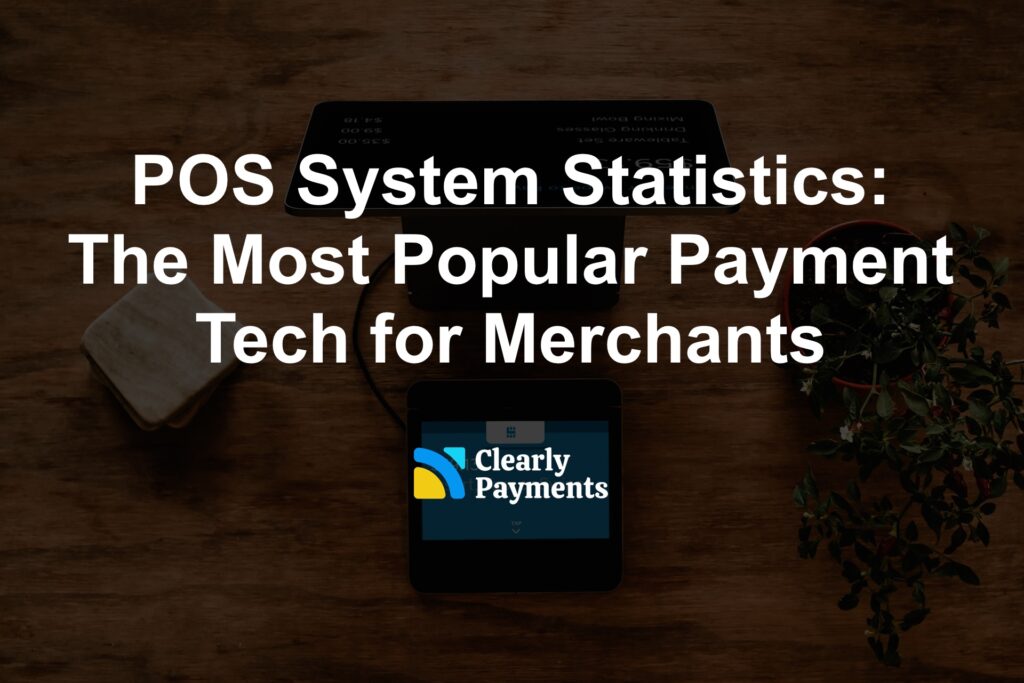If you’ve been shopping lately, you’ve probably noticed that cash registers are becoming a thing of the past. Today’s retailers are using sleek, digital point-of-sale (POS) systems that do more than just process payments—they manage inventory, track customer behavior, and integrate with e-commerce platforms.
With global POS market value hitting $116 billion in 2024 and projected to reach $181 billion by 2030, it’s clear that businesses are investing heavily in modern payment technology.
Retailers are adapting quickly, with 35% of the global POS market share coming from this sector alone. Whether it’s cloud-based systems, mobile payments, or self-checkout kiosks, the way we pay is evolving fast.
What Is a POS System?
A Point-of-Sale (POS) system is the combination of hardware and software that businesses use to process transactions and manage retail operations. Traditionally, POS systems consisted of a cash register and receipt printer, but today’s solutions are much more advanced. Modern POS systems integrate with inventory management, sales tracking, customer relationship management (CRM), and e-commerce platforms, making them a central hub for business operations.
There are several types of POS systems available, each catering to different business needs:
Traditional POS Systems – Typically used in large retail stores, these systems include physical terminals with cash drawers, barcode scanners, and receipt printers.
Standalone Payment Terminals – These are compact, independent card readers that process payments without requiring a full POS system.
Cloud-Based POS Systems – These allow businesses to access their sales data from anywhere, offering flexibility and real-time insights.
Mobile POS (mPOS) Systems – Often used by small businesses and pop-up shops, these systems run on tablets or smartphones and allow transactions on the go.
Self-Checkout Kiosks – Popular in grocery stores and big-box retailers, these allow customers to scan and pay for items without cashier assistance.
A well-integrated POS system helps retailers improve efficiency, reduce errors, and enhance the customer experience. As technology continues to evolve, businesses are leveraging POS systems for advanced analytics, automated inventory tracking, and seamless omnichannel retailing.
POS Adoption by Industry
POS systems are used across various industries, each with specific needs and adoption trends. The following table highlights how different industries utilize POS technology:
| Industry | Percentage of POS Adoption | Key Features Needed |
|---|---|---|
| Retail | 35% | Inventory management, omnichannel integration, contactless payments |
| Restaurants & Cafés | 25% | Table management, kitchen display systems, mobile ordering |
| Grocery Stores | 15% | Self-checkout kiosks, barcode scanning, loyalty programs |
| Hospitality (Hotels, Resorts) | 10% | Room charges, customer profiles, multi-location management |
| Healthcare & Clinics | 6% | HIPAA compliance, billing integration, appointment scheduling |
| Service-Based Businesses (Salons, Auto Shops, Gyms) | 5% | Membership management, recurring billing, CRM tools |
| Entertainment & Events | 4% | Ticketing, contactless payments, mobile sales |
Retail remains the largest adopter of POS technology, driven by the need for fast, secure, and efficient transactions. The food service industry follows closely, with restaurants and cafés requiring specialized features such as kitchen display systems and mobile ordering. Grocery stores have widely adopted self-checkout kiosks, while the hospitality sector integrates POS systems with property management software. Healthcare and service-based businesses use POS technology for appointment scheduling and recurring billing, while entertainment venues rely on mobile payments and ticketing integrations.
The Growth of POS Systems in Retail
Cloud-Based POS Systems
Standalone Payment Terminals
Standalone payment terminals are widely used by small businesses, food trucks, and service providers who need a simple, reliable way to accept card payments. In 2024, 48% of small retailers used standalone terminals as their primary payment method due to their affordability and ease of setup. The standalone terminal market is expected to grow at a 6.2% CAGR, driven by increased adoption among independent businesses and mobile vendors.
Cloud-Based POS Systems
Contactless and NFC Payments
Near Field Communication (NFC) technology is revolutionizing the retail landscape. In 2024, 53% of all retail transactions were made using contactless payments, a significant increase from 40% in 2022. Supermarkets and department stores are leading the charge, with 90% of major U.S. retailers now accepting tap-to-pay options.
Integrated E-commerce and POS Systems for Omnichannel Retail
Buy Now, Pay Later (BNPL) Options
The demand for flexible payment solutions is growing, and retailers are capitalizing on Buy Now, Pay Later (BNPL) services. BNPL usage in retail has grown by 85% in the past three years, with 42% of consumers in the U.S. using it at least once in 2024. Popular services like Klarna, Affirm, and Afterpay help boost conversion rates and increase the average transaction value by 30%.
Self-Checkout Kiosks
AI and Machine Learning in Retail POS
Artificial Intelligence (AI) and Machine Learning (ML) are playing an essential role in retail POS systems. AI-driven POS solutions offer features such as dynamic pricing, fraud detection, and personalized customer recommendations. By 2025, 47% of retail businesses are expected to implement AI-powered POS functionalities, enhancing both operational efficiency and customer engagement.
Cryptocurrency in POS Systems
While still a niche, cryptocurrency payments are gaining traction in the retail sector. Currently, 12% of retailers accept Bitcoin and other digital assets, a number expected to grow as blockchain technology becomes more mainstream. High-end retailers, electronics stores, and online marketplaces are leading the way in crypto adoption.




